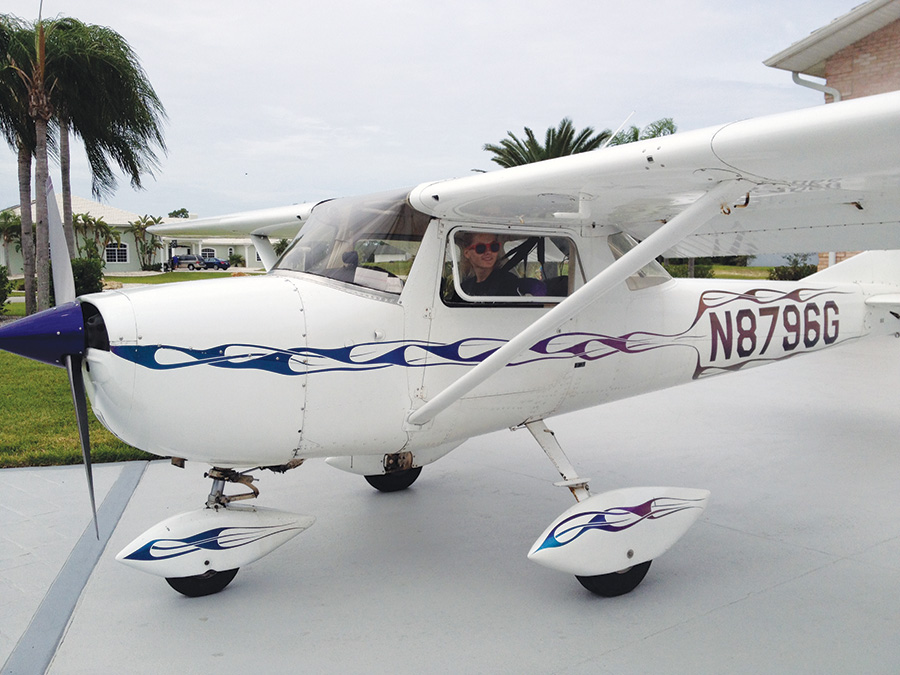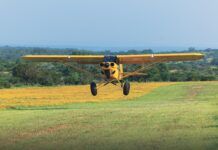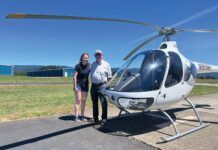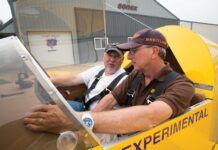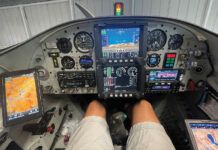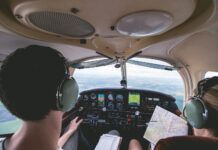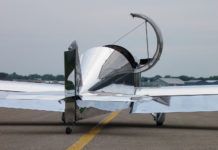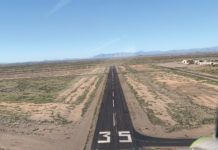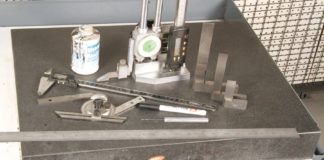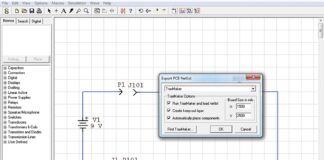You know what I love about flight instruction? The look in my student’s eyes as she pulls in after her successful checkride, when she shuts down the engine of the venerable trainer that has served her so well through a year and a half of on-again, off-again flight lessons, and now helped her earn her first pilot’s certificate. It is a look of confidence and excitement. It’s ruined, of course, the moment she meets my eyes and becomes self-conscious about having not completed the shutdown checklist (I’m a stickler for checklists, as any flight instructor should be—it’s a survival tactic that works).

The Paper Jam
You know what I hate about flight instruction? The paperwork. What it takes to mint that new pilot in stacked paper (or virtual paper) is perhaps as daunting as the Practical Test Standards for the Sport or Private Pilot license. It took an entire day of combing through logbook, syllabus and 14 CFR Part 61 regulations just to finish filling out the digital 8710 form on IACRA (you don’t want to know what it stands for; just know that every pilot climbing through his/her ratings, and every flight instructor working, has an FTN number in the IACRA system—and should not lose it). All that, and this student barely had more than 100 hours of total flight time, with a few of those being the kind that really should not have wandered into a student logbook.
What kind of hours are those? The kind you accidentally log because a friend takes you for a ride in his cool multi-engine airplane, light helicopter or glider and lets you at the controls for a few minutes, and, as it turns out, that friend, even though he might be a check airman for his employer, doesn’t have a current FAA Certified Flight Instructor rating at the time of the flight. I swear there’s a couple of hours like that in every student logbook I’ve touched in 27 years of flight instruction.
Once you are done backing out the un-loggable hours from the logbook, you have to ensure that the student actually went over the items missed on the written exam. Yep, you have to look up the questions and go over every single one. Most students have passed that written earlier, so the good news is this can be a pretty straightforward review. The hope is that by the time they are ready for a checkride, any issues from the written exam have been resolved long ago. In this student’s case, most of the problems she had with the written were around her then-tenuous grasp of METAR and TAF shorthand and an inability to read the cryptic VOR location/indication questions. She proved she understood it, and we went back to paperwork.
The Cessna 172 is quite a move up for Lynch. It’s heavier, a smidge faster and doesn’t have quite the flaps deflection, but there is no question that it handles crosswinds better than its little brother, the Cessna 150.
Endorsement, Please
Finally come the endorsements. Endorsements could be the reason most flight instructors age out of the job and find some other line of work in aviation. In signing off one Private Pilot for her checkride, I counted no less than five endorsements that I had to complete. I had to verify that I’d given her instruction for the practical test in the last 60 days (even though the lessons were right there in her logbook). I had to verify that I’d reviewed with her the questions she’d missed on the written exam (once on the exam results and again in the logbook). I had to declare that she was qualified to take the oral and practical exam, and, finally, I had to sign her off for the student cross-country flight to the airport where she would meet the designated examiner and actually take the exam.
I hate it, yet I endure all that, because I love knowing that my now-former student, at 18, is one of aviation’s next great hopes, and Experimental aviation can take credit for ushering her in. This student fell in love with aviation after a Young Eagles ride with a family friend at a pancake breakfast. After that, she received a certificate for a free Sporty’s Complete Private Pilot course. She went to an Embry-Riddle-sponsored collegiate high school, one of the first in the state of Florida. There she studied both pilot and mechanical courses in addition to her regular load of English, math and science. This helped immensely when it came to teaching her to fly. These high-school programs, such as Central Florida Aviation Academy at Lakeland Linder Airport or Robin Petgrave’s Tomorrow’s Aeronautical Museum after-school program at Compton Airport in California, will help produce the next generation of pilots, air traffic controllers, aerospace engineers, avionics technicians and mechanics that, if you believe the FAA forecasts, are going to be desperately needed to support the aviation infrastructure of tomorrow.
Looking Ahead
It’s a daunting task, trying to grow this next generation, which has been raised with so many other distractions competing for their attention. Flight Safety Foundation COO Kevin Hiatt recently said that while the typical pilot graduating from a university aviation program has 300-500 hours of flight experience, the typical 21-year-old, college-educated male has an average of 17,000 hours of video/computer gaming experience. And those are the students with the hand-eye coordination for the jobs in our industry! That’s tough competition for this generation’s attention. This crop of youngsters is all about immediate gratification. They no longer need to wait to have something delivered—they are the download-and-install generation, and for them, the time it takes to earn a pilot certificate is, well, forever.
My student was hardly immune to these distractions, and she had others too. She struggled to pay for the flying, working a hostess job at a local restaurant evenings and weekends to scrape together the money. That was on top of her schoolwork. And she added another part-time job in the summer. She hated working from a textbook, or passively watching DVDs, and she once confessed that in all of her school years she had never studied for a test (I fixed that!). In the end, we found a flashcard app for her iPhone that seemed to best engage her for studying (somehow this generation’s thumbs really are directly connected to their brains).
Another symptom of her generation’s “immediate gratification” syndrome is found in the FAA airman statistics. We have seen a rise in the number of student pilots, but we are seeing a significant drop in the number of Private Pilots with U.S. certificates in the last seven years. That means we are doing a decent job of recruiting potential pilots, but unfortunately, they are not sticking it out to complete the course and earn a pilot’s certificate of any kind.
Lynch celebrates with her flight instructor, the author, after successfully navigating to and from the distant port of Lakeland, Florida (a legendary place she hopes to return to in the spring, around Sun ’n Fun time).
The Failure Rate
Even my student gave up—twice, in fact. Once it was a lingering carburetor problem with the trainer that a friend had so graciously loaned to her for training (the only thing making the course affordable for her). It was fixed after three months of trial and error, but she didn’t come back to flying for another three months after that. Why? Holidays, school, finances…and other distractions of modern life. As she said, “It’s just taking so long; I thought I’d be done last summer.” The other hiatus came after high-school graduation, when she decided that a road trip took priority over finishing up, because, well, you are only 18 once. (That was actually tough logic to argue with.)
She did finish, though. I’d credit that to the little village of pilots surrounding her, from the family friend who loaned her the trainer in exchange for lots and lots of airplane detailing, to myself and my retired-airline-pilot and very-part-time flight-instructor husband, who helped me out with her stage checks at different points in her training. And even though she did not, as Embry-Riddle would have liked, matriculate directly into the private university’s college this past autumn, she is still enamored with aviation. In fact, it won’t be long before she’ll add another endorsement to her logbook as she checks out in something larger than a trainer, a real “traveling machine” that can cruise at 120 knots, she quipped to me proudly. And building an airplane? The seed has been sown, and for this kid, with her mechanical background from Embry-Riddle’s high-school program, it’s a real possibility one day.
Nothing could make me happier. We need more general aviation pilots in the system right now flying homebuilts, factory-builts—just flying! The more we fly, the more avgas (that dwindling resource) we purchase, the more avgas the oil companies will manufacture. And the more we fly, the more likely our small general aviation airports will stick around to receive us. It is the simple law of demand dictating supply. So look outside. If it’s a good day to be flying, go be demanding!


